Holi, a festival of colors, holds great significance in the Hindu religion. It is being celebrated at all corners of the nation, following different historical beliefs, rituals, and traditions. Among those cultures, today we will learn about the mythological and traditional aspects of Holi in the Sangla Valley.
Amidst the secluded environment of the Himalayas, the Sangla or Baspa Valley is located in the Kinnaur district of Himachal Pradesh, bordering Lahaul Spiti and the Shimla district. With its pristine landscapes and raw beauty, the valley stands at an elevation of 8,900 ft above sea level. Unlike mainstream Holi festivities, Sangla Holi has elements such as snow play alongside colors, enactments from the Ramayana, and ancient tribal customs dating back over eight centuries!

In their local dialect, the residents of the village also call this valley the Tukpa Valley. Sangla hosts a grand and vibrant event of Holi, where the locals of the villages in the Valley come together and partake in this joyous festival. Through this article, we will explore the interesting facts and features of the Sangla Holi.
Table of Contents
Holi in Sangla:
In 2026, Sangla Holi will be celebrated on 3-4 March.
Sangla Holi, while being a celebration of colours, also holds cultural significance. Also called as ‘Fagli’ or ‘Faguli’ Festival, its history dates back to 800 years, making it one of the oldest celebrated festivals in the Himalayan region. Sangla Holi is deeply rooted in the valley’s unique blend of Hindu and Buddhist influences that show Kinnauri culture. This festival marks the end of winter, transition to spring, reinforces community bonds, honors ancestral traditions, and pays homage to local deities who are believed to protect the valley.
Referred as the ‘Festival of Masks’, the celebration features elaborate character portrayals where villagers enact characters from Hindu epics and local folklore, creating a cultural storytelling. The festival is celebrated over four days, with grandeur.
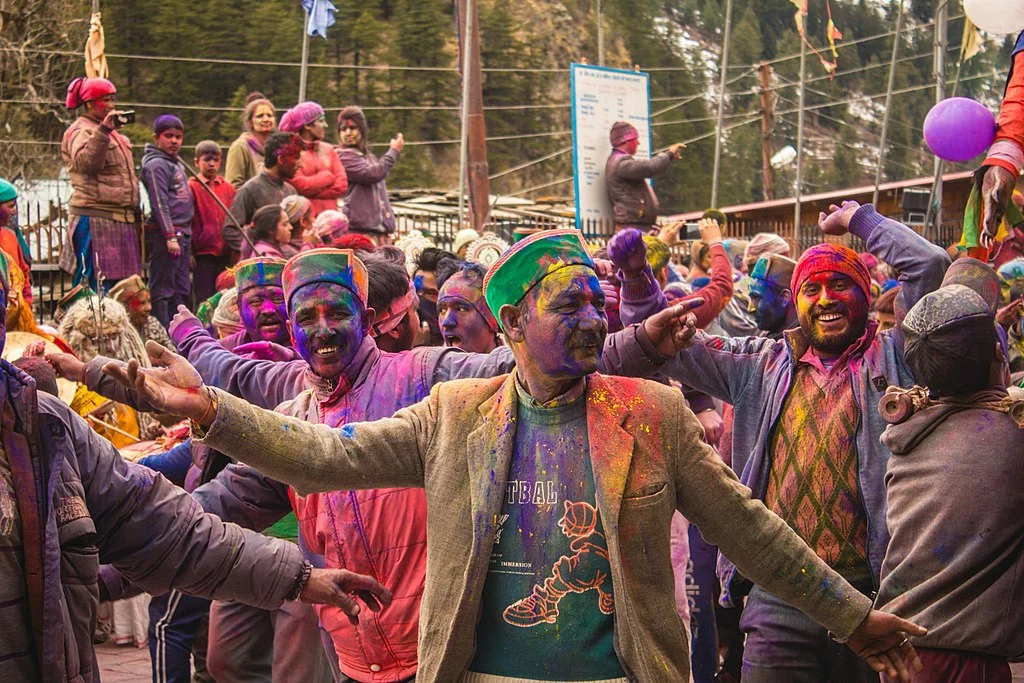
Holi In Sangla
Key Features of Sangla Holi:
This Kinnauri Holi is full of positivity and an energetic aura. Here are some interesting features that draw a huge crowd of travelers.
- The Holi in Sangla represents the harmony between nature and humans.
- The villagers even embellish their homes with colorful lights and lit-up diyas and lamps.
- They all gather in the complex of the Nag temple to seek the blessings of the god, and then an enormous feast event takes place.
- The villagers then enjoy the folk dance, which in their local language is known as Phagli, performed by the men and women with perfection.
- The people exchange their local delicacies and serve a special type of alcohol, which is also a part of their ritual.
- The men play the role of the Ramayana’s characters.
Cultural & Historical Significance:
The Sangla Holi marks the end of winter and the arrival of spring. It also honors the start of their fresh crops. This festival combines the characteristics of both Holi and Diwali by using colors and diyas at a Himalayan backdrop.
It is a way of preserving and keeping that old tradition alive in their hearts. The festival is passed down to them by their long-gone ancestors, and they’re simply maintaining the cultural heritage of their region. This also shows how grateful they are for their natural surroundings, which they generally highlight through their dances and music.
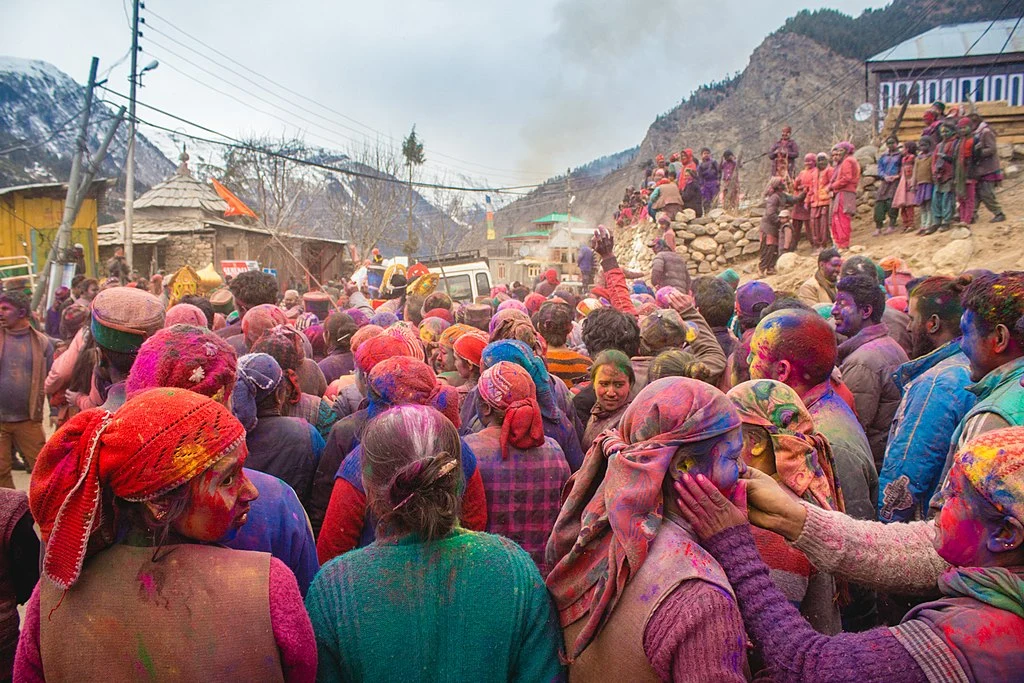
Sangla Holi Rituals and Ceremonies:
The preparation for the festival begins weeks in advance, with village councils meeting to assign responsibilities, locals cleaning their homes, gathering things for the rituals from nearby forests and markets.
Day 1: Preparatory Phase
The first formal day of the festival begins with the preparation of “Totu,” a sacred dish made from buttermilk and roasted barley flour, which is later distributed as prasad. The elders visit the Nag Temple, to perform the opening ceremonies. This ritual shows solidarity amongst the community, and the agricultural heritage of the region.
Day 2: Spiritual Observances
The second day of this Faguli Festival sees the locals gathering at the sacred sites in the valley, to perform prayers to the local deities and spirits. Traditional Kinnauri musical instruments including dhol, karnal, and shehnai are played in processions that go around the villages.
Day 3: Main Holi Celebration:
This is the day that paints the valley in colours of joy! Locals and the travelers gather at Sangla Chowk, dressed in white, to play ‘Gulaal wali Holi’ and get covered in vibrant colours. How can one forget playing with snow, when in Himachal! That adds to the celebration too. ‘Phagli’ dance is performed, representing the harmony between humans and nature, which also tell the stories of Kinnauri life and legends.
Day 4: Last Celebration
On the last day of the celebration, they light up diyas, symbolizing the triumph of light over darkness and good over evil. The highlight is the street performances where locals enact scenes from the Ramayana epic, with emphasis on Lord Rama’s victory over the demon king Ravana. Later, a grand community feast takes place where local delicacies and wines are shared. As the festival comes to a close, the community exchanges blessings and good wishes for the harvest season ahead.
How to Reach Sangla:
Given the location, a trip to the Sangla Valley requires careful planning. Here is all the information you need:
By Air:
Chandigarh airport, 350 km away has the most connections from major India cities like Delhi, Mumbai, Bangalore. From there, you could hire a taxi or a take a bus to Shimla and onward to Sangla.
You could also fly to Shimla Jubbarhatti Airport, which is a closer option, being 194km away, and hire a taxi to Sangla. Bhuntar Airport, near Kullu, is another option you could consider.
By Train:
The Kalka Railway junction in Shimla is the closest station to reach Sangla Valley. From there you could hire a taxi or a bus to the valley. From Kalka, you can take the famous Kalka-Shimla Toy Train to Shimla for a scenic journey before continuing by road.
You can also arrive at the Chandigarh Railway Station, as it has better connectivity.
By Road:
This is the most common and scenic way to reach the Sangla Valley.
From Chandigarh or Delhi, you could take HRTC bus to Shimla and then a bus to Sangla. If you are arriving at Shimla, then take the bus directly from there. Be sure to check for the departures prior. From there, hiring a taxi is a convenient option.
Places to Visit in Sangla:
The Sangla Valley offers multiple sightseeing spots that need your undivided attention.
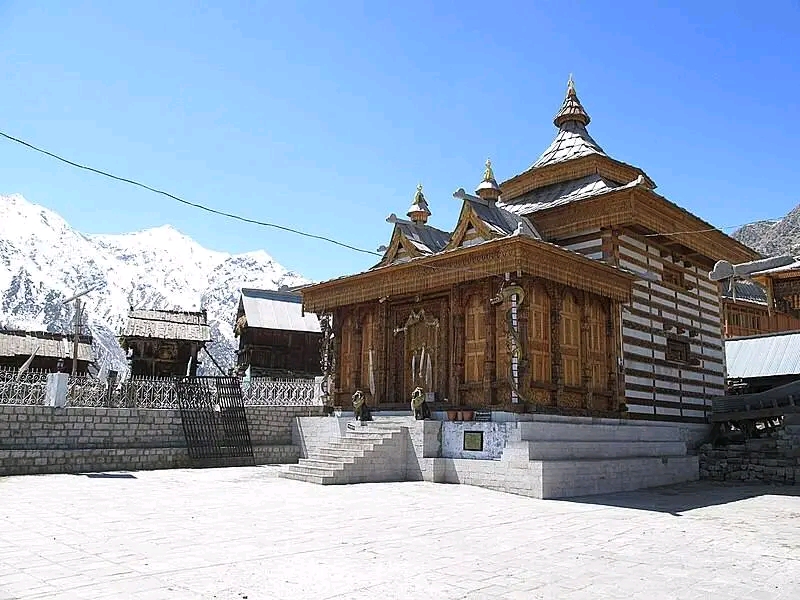
Chitkul:
Chitkul is a quaint hamlet, settled at a high elevation of 11,000 ft, serving magnificent views of the valley to its visitors. On the route from India to Tibet, this is the last Indian village you’ll encounter. From the top point of the hamlet, you can have a look at the Kinnaur Kailash range. It is also regarded as the cleanest village in Himachal. The 500 year old Mathi temple is another place you can visit.
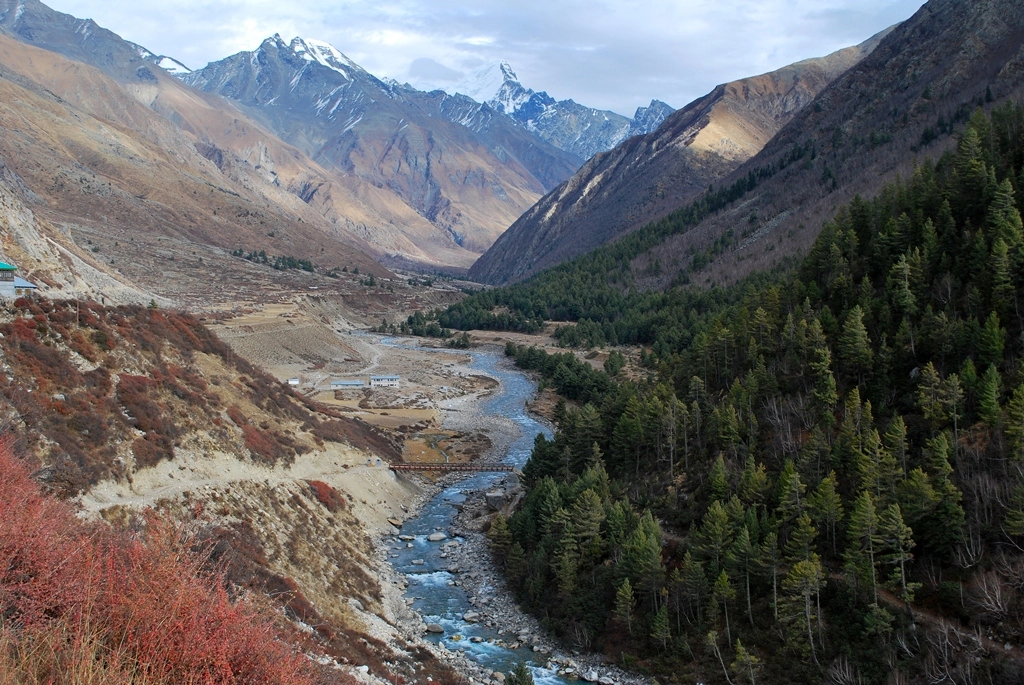
Bering Nag Temple:
The Bering Nag Temple is the main attraction of the Sangla village, dedicated to Lord Shiva. Its intricate carvings on the wooden walls are what attract people. Women are only allowed in the temple, if their head is covered. During its annual function of the Fulaich fair, thousands of devotees come here to seek the blessings of the deity. This is organized in the days between August and September when the temple gets crowded to participate in the fair.
Rakcham:
This is another remote hamlet in the Sangla Valley. Rakcham is situated between the Sangla and Chitkul villages. You might not have heard of this village, but it is one of the hidden spots of the Valley. The town of Rakcham is set amidst splendid surroundings and is an ideal destination for anyone seeking tranquility.
Under its serene atmosphere and less-populated settlements, you can enjoy a pleasant nature walk alongside the river Baspa. You’ll see numerous apple orchards in and around the Rakcham, and it offers campsite services too if you want to spend a night or two. This is around 14-15 km away from the Sangla Village.
Sangla Buddhists Monastery:
This is the local Buddhist monastery in the Sangla village, also known with the name of Brelengi Gonpa. The monastery holds a rich religious value for the villagers of Sangla. It was established around 1992 by the Mahabodhi Society to invite the Dalai Lama so that he could perform the Kalachakra Ceremony.
Its Buddhist architecture is a sight to behold with all the modernization that you’ll see in the wooden carvings on its walls and roof. A 10-meter standing idol of Lord Buddha is worshipped in the monastery. The entrance is adorned with vibrant colors and artistically detailed designs that form a delightful retreat for eyes against a vivid Himalayan landscape.
Kamru Fort:
Encompassing river streams, apple gardens, and lofty mountains, the Kamru fortress is located at an altitude of 2600 m. This picturesque fort is a testament to the workers who crafted and built it on the orders of a king belonging to the Bushahr dynasty. Its Kathkuni style of architecture is the distinct feature you see between this fort and others.
It is a multi-story building designed with delicate etchings consisting of a pyramid-structured roof, a wooden balcony, and a flight of stairs that takes you to its top, where an idol of Kamakhya Devi is placed. It’s believed that this idol was brought from Guhawati. The entire temple premise is made of timber wood, which is locally found here. It’s also said that this temple was built around the 15th century. There is a fair held once every three years, which draws a huge crowd.

Baspa River:
The Baspa Riverside is a must-visit destination in the Sangla Valley. As you settle beside the river, the soothing sound of the river envelops you, calms your soul, and creates a tranquil atmosphere.
The river originally originates from the Baspa hills and merges with the Satluj course afterward. Amidst numerous oak and pine trees, apple orchards, and snow-capped mountains, this sight will definitely stun you. Around the Baspa River, you’ll be able to notice several glaciers, which add more charm to its raw beauty.
Tibetan Wood Carving Center:
The Tibetan Wood Carving Center is basically a souvenir shop where you’ll find hand-crafted items that show the traditional heritage of the Kinnauri culture. Looking at those miniature arts, you can also admire the craftsmanship of the people living in the particular region. They embrace their culture through the intricate carvings they do in wood.
Sangla Meadow:
The Sangla Meadows is renowned for its natural beauty, scenic vistas, and the 180° view of the valley. It is also known as the Sangla Kanda, which offers camping and trekking. From its top point, the delightful view of the Kinnaur Kailash will blow your mind. This meadow is completely encircled in lush greenery, mountain ranges, and oak and pine forests, which makes it an ideal spot for an escape.
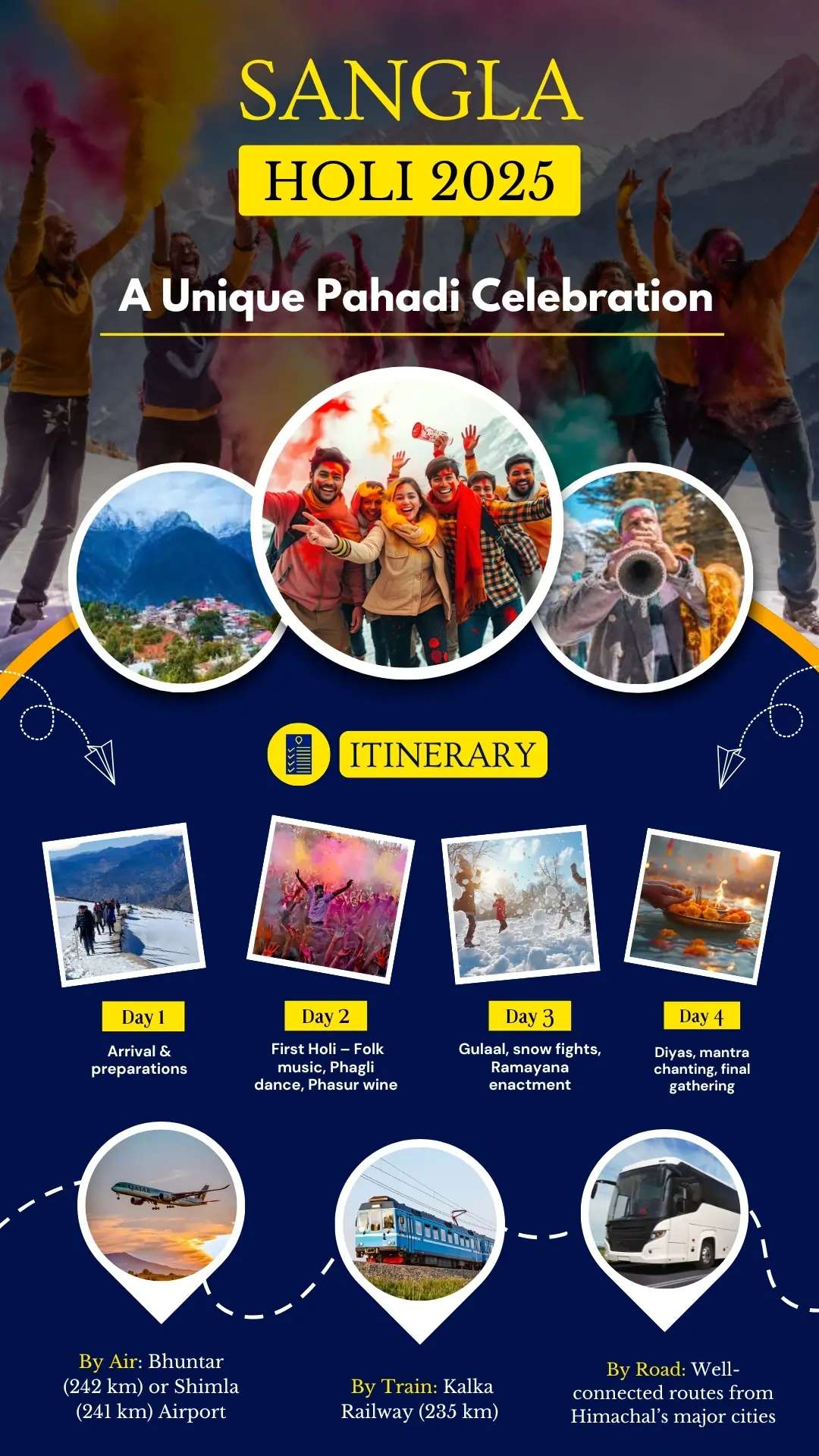
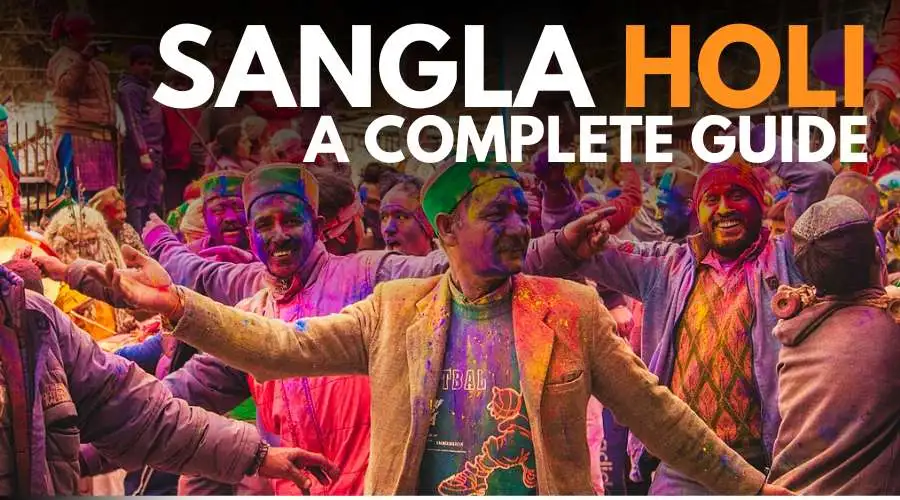
Leave a Comment